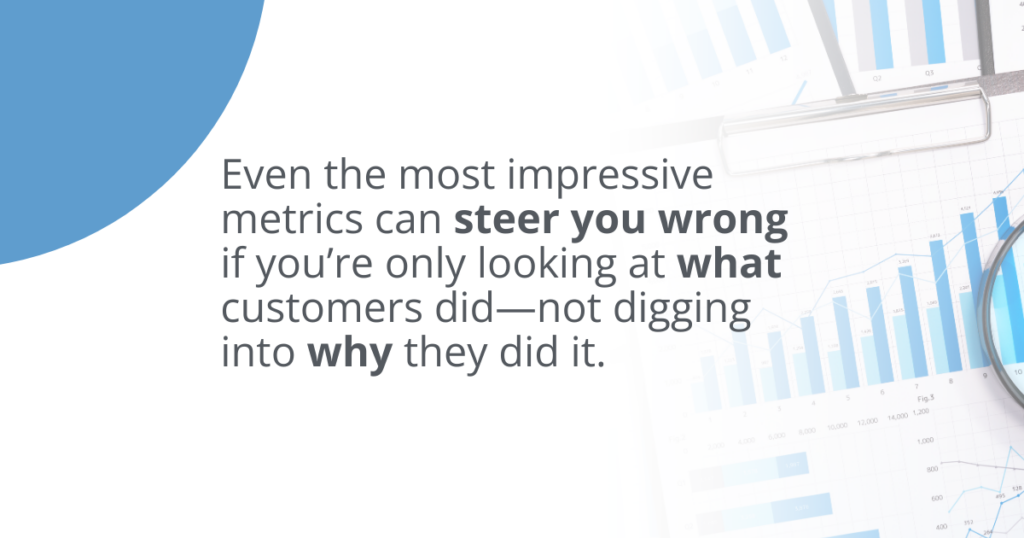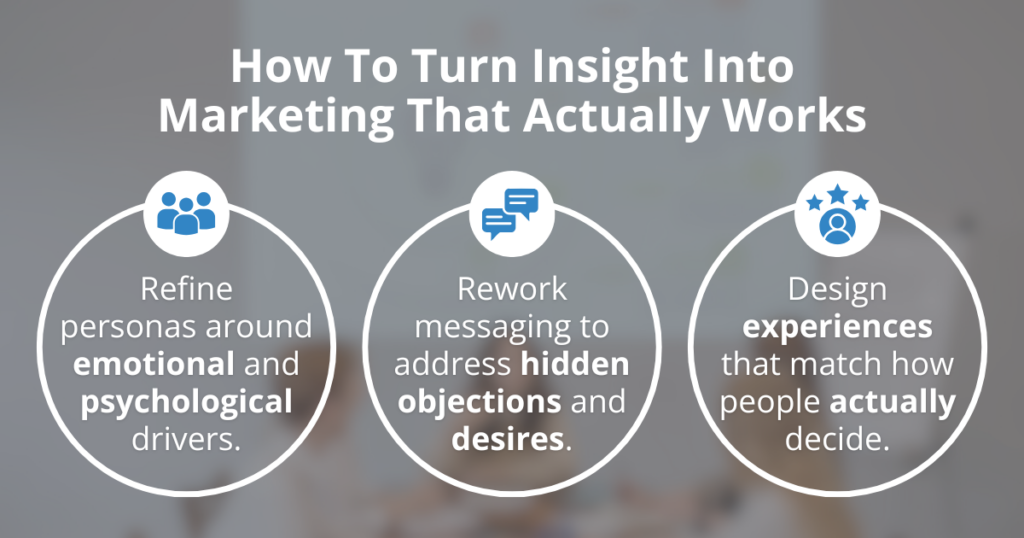Every day, your customers are faced with an overwhelming number of choices—some studies suggest we make upwards of 35,000 decisions a day. From what brand of coffee to grab on the way to work to whether to renew a subscription or click on an ad, many of these decisions are made subconsciously, influenced by emotion, bias, habit, and context.
This has a major implication for marketers: Customers are not always making decisions rationally. And if your brand is only looking at surface-level behaviors—like clicks, purchases, or responses—you might be missing what really drives those decisions.
Qualitative research offers a powerful way to uncover what’s beneath the surface: the thoughts, emotions, and motivations that customers don’t always articulate—but that heavily influence what they do.
Unpacking the Decision-Making Mindset
Decision-making is not just about comparing facts and figures. It’s a complex psychological process shaped by a variety of mental shortcuts and emotional triggers.
Here are a few key drivers:
- Emotion vs. Logic: We like to think we’re rational, but studies show that emotion often drives decisions—and logic sometimes shows up afterward to justify them.
- Cognitive Biases: Customers rely on mental shortcuts like anchoring (fixating on the first piece of information they see) or confirmation bias (seeking out info that supports what they already believe).
- Social Proof and Herd Behavior: People look to others—reviews, influencers, peers—for cues. If everyone else is doing it, it must be the right choice.
- Risk and Loss Aversion: Customers are often more motivated to avoid loss than to pursue gain. Even a small perceived risk can derail a decision.
These dynamics shape everything from product preferences to brand loyalty—often without the customer even realizing it. And unless you’re asking the right kinds of questions, you won’t see these patterns in traditional data.
Why Data Alone Can Lead You in the Wrong Direction

Metrics like click-through rates, bounce rates, and sales figures can tell you what your customers did. But they can’t tell you why they did it—or why they didn’t.
The common assumption, “If a customer clicks on it, they must like it,” is not necessarily true. Maybe they clicked out of curiosity. Or confusion. Or because they thought the link was something else.
Traditional, closed-ended surveys can fall into the same trap by utilizing leading questions or limited answer options that distort the truth.
Without a deeper understanding of the decision-making process, even the most data-rich companies can make flawed assumptions and miss key opportunities to connect.
Tapping Into the “Why” With Qualitative Research
To uncover real customer motivations, brands need to go deeper. That’s where qualitative research comes in. It’s designed to explore the “why” behind decisions, using open-ended and exploratory techniques such as:
- In-Depth Interviews: One-on-one conversations that reveal personal stories, unmet needs, and emotional drivers.
- Open-Ended Market Surveys: These go beyond yes/no answers and capture nuanced, authentic customer feedback in their own words.
- Focus Groups: Interactive sessions that surface shared experiences, language, and group dynamics.
- Customer Journey Mapping: A visual walk-through of how customers experience a brand, highlighting both pain points and delight moments.
- Bulletin Boards: Online, asynchronous discussions where participants share insights over several days—great for capturing thoughtful, reflective responses.
- Projective Techniques: Creative exercises like storytelling, image association, or sentence completion that help uncover thoughts and feelings people might not express directly.
- Ethnographies: Deep observational research that places the researcher in the customer’s environment to see how they really think, feel, and behave in context.
At New Perspectives Marketing, we specialize in this kind of work. We don’t rely on assumptions—we build research that listens to what they have to say, probes for more context or information, and reveals deeper insights.
Through real conversations, we uncover real insights that create real change in how brands connect with their customers.
Align Your Market Strategy With How People Actually Think
Once you understand what your customers really think and feel, you can transform your marketing approach.

- Refine personas using emotional and psychological motivators—not just demographics.
- Rework messaging to speak directly to the unspoken objections, desires, or fears your audience holds.
- Improve user experience to align with how people actually make decisions, not how we wish they did.
With the right research techniques, you can integrate invaluable insights into every touchpoint—from website copy to ad strategy to customer experience design. This will produce more effective and empathetic marketing that meets customers where they are.
It’s Time to Understand What’s Really Driving Your Customers
Customer decisions aren’t just transactional—they’re emotional, contextual, and often subconscious. If you want to influence behavior, you need to go deeper than metrics. You need to understand the beliefs, perceptions, and stories that shape your customers’ actions.
At New Perspectives Marketing, we specialize in unlocking those hidden drivers through qualitative research. Let’s uncover what your customers really think—so you can create marketing that actually connects.
Ready to see the psychology behind your customers’ decisions? Let’s talk.



